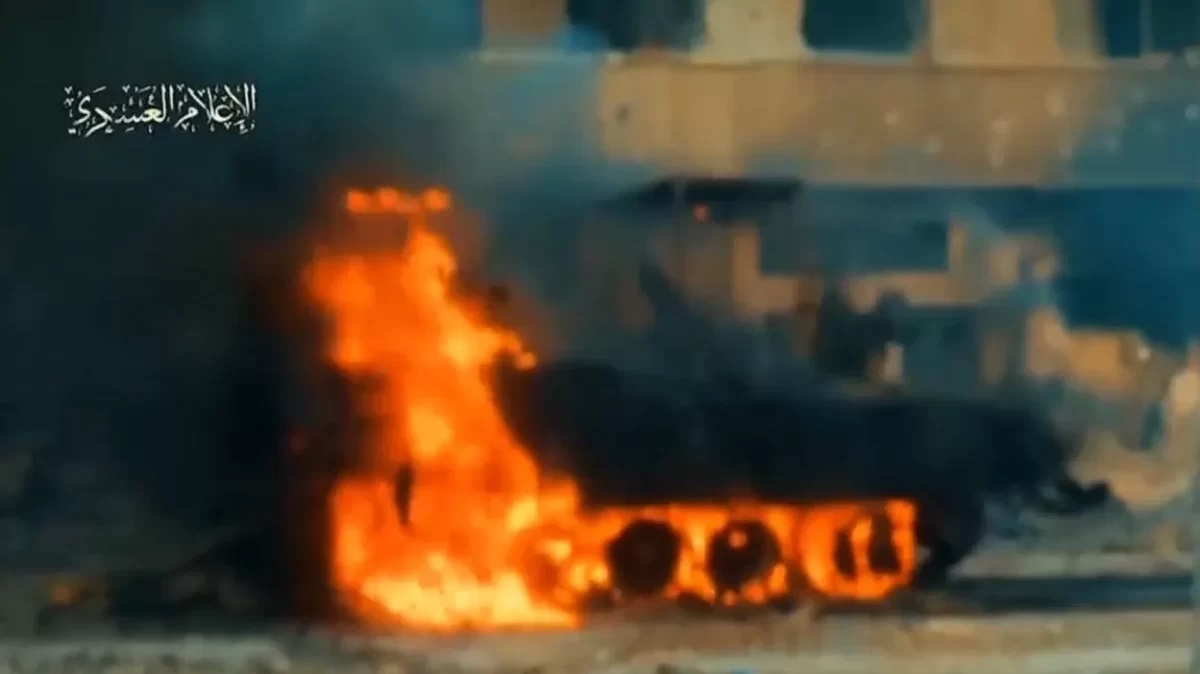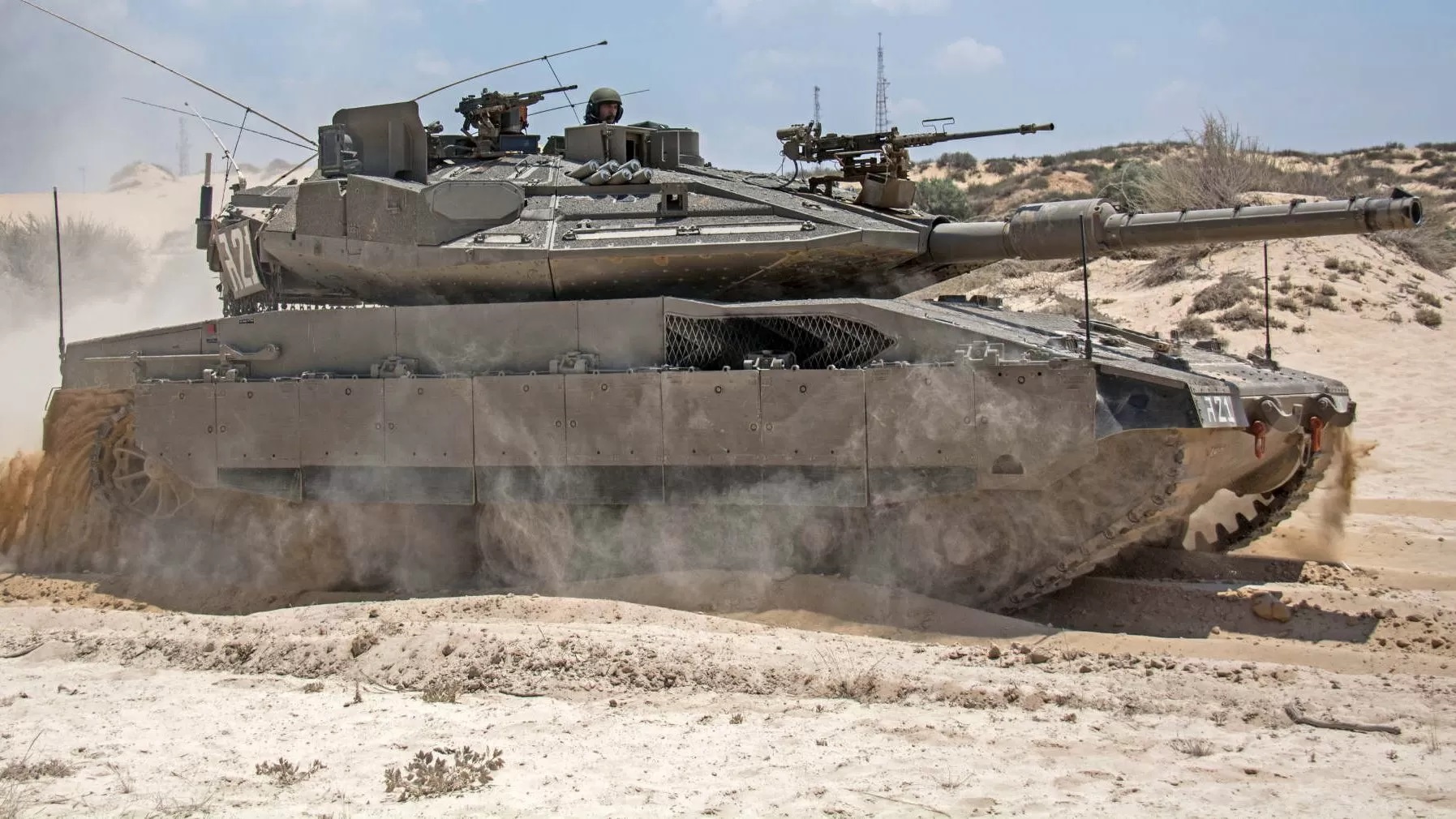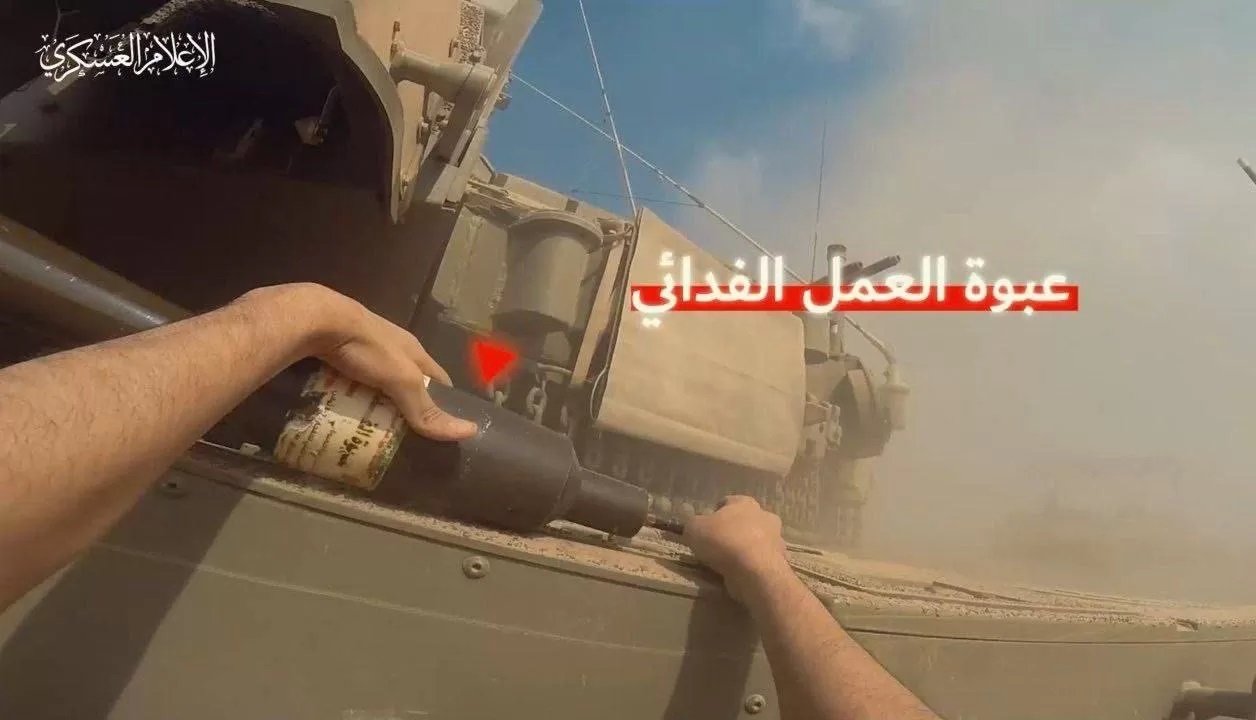Hamas’ Strategic Tactics Against Israeli Tanks: Insights and Analysis

Watan-The Al Jazeera website highlighted what it called “Hamas’ secret weapon” in penetrating Israeli soldiers and tank formations and destroying them, as shown in hundreds of videos circulating on social media platforms.
The report, written by researcher Shadi Abdelhafiz, pointed out that the occupying forces do not disclose the formations adopted by their tanks and armored vehicles during a specific operation. However, there are several general formations used by armies worldwide, including the occupying army.
Dream and Reality
Abdulhafiz stated in his analytical report that the leaders of the Israeli occupation army go to sleep every night with only one dream: for the current war, which has become a quagmire for them, to turn into a very classical tank battle, even at the level of the Battle of Kursk (in 1943). The Battle of Kursk was the largest tank battle in history, involving over 6,000 tanks between the Soviet Union and Germany.
Tanks provide support for infantry and engineers to carry out their tasks from a safe distance. This is a simple tactic that takes advantage of two strengths of modern tanks: long-range firepower and advanced sensing devices.

Tank Formations
The report pointed out that tanks like the Merkava, for example, possess the latest technology in these domains. Here, the reference is not just to the “Trophy” system that anticipates the next hit, or the reactive tank armor, or the “cage armor,” which is akin to a steel mesh protecting the tank from incoming missiles.
The intended meaning is also that the Israelis have learned a lot from the Ukrainian experience, and among the lessons learned is the principle that each tank has a UAV (Unmanned Aerial Vehicle) flying above it, scanning the area in real-time and providing data to the formation commander and other leaders.
Israeli Tanks
The Merkava tanks are among the most advanced tanks in the world. When a resistance fighter is seen striking a Merkava tank or a Namer armored vehicle, it might be assumed that these vehicles operate individually on the street. However, the reality is much more complex, and it doesn’t just stop at the notion that each tank has a UAV. It also involves the formations of tanks.
Not Just a Stray Tank
Abdulhafiz delved into discussing the tactics of Israeli tanks and their formations, emphasizing that what the resistance soldiers face is not just a stray tank but a complex formation of forces requiring one of two solutions to confront it. The first is a matching formation in terms of strength and capabilities (or greater), which is not available to the resistance. The second relies on the fundamental element of irregular warfare, which is intelligent surprise and what is known as complex ambushes, often employed by the resistance.
For example, a team of resistance fighters might stand in a building on the other side of the road, creating a V-shaped firing position when engaging the occupying forces. This creates a kind of “jaw trap” on the tank convoy, as well as dispersing its fire.

The report highlighted that in complex ambushes, different types of weapons are used by various groups of soldiers from different angles and multiple locations, not just from one place.
In the case of Palestinian resistance, it is assumed that they prefer to initiate the ambush with explosive devices, perhaps to halt the progress of the tank and armored convoy and maximize enemy casualties in the first strike. Following that, they may use armor-penetrating shells from a single building or opposing structures like the “Yassin 105” or Cornet. Finally, small arms come into play.
Urban Terrain and Tunnels
According to the source, the complex ambush aims to inflict the maximum number of losses in the shortest possible time. If a resistance fighter doesn’t disappear as quickly as possible (while preserving themselves and their ammunition), tanks will strike the building immediately, and aircraft will follow soon after. However, in this context, the resistance possesses two additional weapons alongside excellent planning for complex ambushes: “urban terrain” and “tunnels.”
Tunnels are considered the most potent weapon in this war due to the resistance’s ability to plan intelligently.
It is known that there is a network of tunnels extending deep beneath the city of Gaza, covering hundreds of kilometers. This makes the resistance fighters appear as ghosts to the occupying soldiers, appearing and disappearing in the blink of an eye.
In addition to urban terrain, tunnels are the reason the resistance can target Israeli tanks and armored vehicles from short distances (less than 50 meters).
Zero Range
Furthermore, resistance fighters can sometimes reach the tank itself at zero range. In such cases, there is no need to use anti-tank shells; instead, a cheaper tool like the armor-piercing explosive device, such as “Shawath,” can be used. Just compare the cost of a locally made explosive device (a few tens of dollars) to the cost of a tank, which runs into millions of dollars.
The mentioned tactics have contributed to the success of the resistance in inflicting significant losses on the occupation, reaching nearly 1000 Israeli tanks and armored vehicles.
Additionally, the internal situation in Israel appears more politically turbulent than ever, with protests erupting worldwide condemning unprecedented aggression against civilians. There are also signs of disruption in the strong political bond between the West and Israel. As a result, the situation seems to be favoring the resistance, which possesses relatively small weapons but combines them with intelligent planning and unwavering determination.






